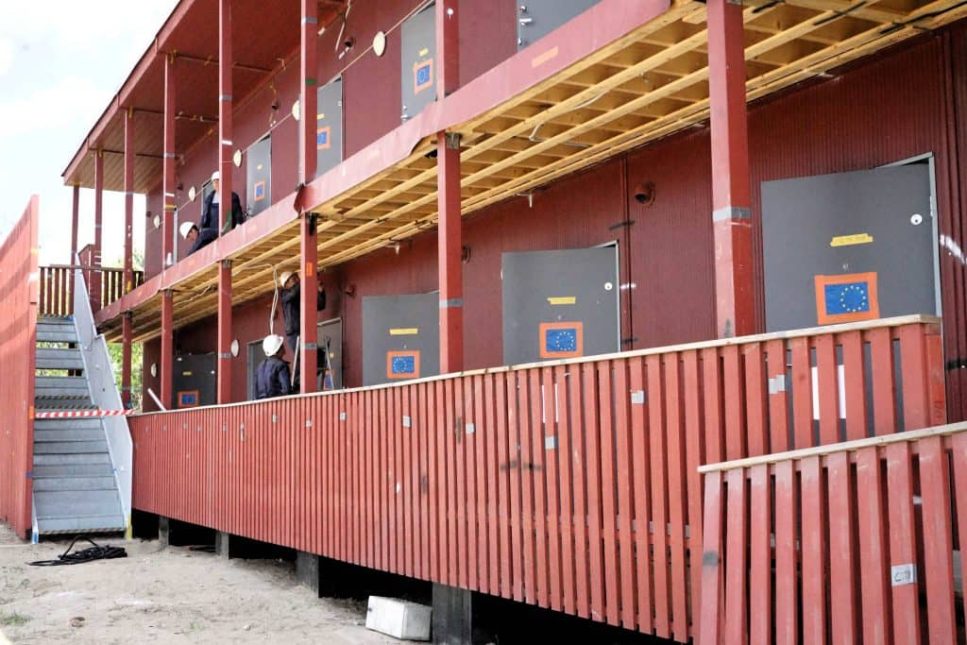
Assembling the future: providing new homes for Ukrainians displaced by war
04/12/2024
“It was impossible to stay there. They [the Russian military] were everywhere, at the entrance with weapons, their equipment scattered around. We were just afraid to stay, so we left.”
Before Russia’s full-scale invasion of Ukraine, Inna and her family lived in Enerhodar and worked at the Zaporizhzhia Nuclear Power Plant (ZNPP). The Russian occupation of her hometown and the ZNPP, Europe’s largest nuclear power plant, turned their lives upside down, depriving Inna and her family of their home, friends, familiar workplace and a settled peaceful life.

As we talk, Inna asks us not to show her face in photographs as she fears for the safety of her family members who remain under occupation. She now lives with her husband, daughter, and grandson in Khmelnytskyi Oblast and works at the local Khmelnytskyi Nuclear Power Plant. She is part of a team building new homes for hundreds of colleagues who were forced to leave their hometown of Enerhodar to escape the Russian occupation.
These modular houses, donated by the municipally of Danderyd in Sweden and delivered to Ukraine by the Swedish Civil Contingencies Agency (MSB) through the EU Civil Protection Mechanism, will soon be home to at least 240 evacuated ZNPP employees, who currently work at the Khmelnytskyi nuclear power plant.

Construction is in full swing: local nuclear power plant employees, specially trained by the MSB team, are assembling hundreds of structural elements like giant Lego bricks, transforming them into fully-fledged two-storey buildings with small apartments equipped with the basics for comfortable living: individual bathrooms, boilers, ovens, hobs, refrigerators, etc. In addition, the European Union, together with the MSB and the Khmelnytskyi NPP, is working on furnishing the future homes of the evacuated ZNPP workers.

Plans are underway to build at least four such housing complexes. According to Khmelnytskyi NPP officials, the houses have excellent thermal insulation and will be comfortable to live in even during the harsh Ukrainian winters.
The modular town will also have a recreation area, a sports ground, and a car park. The Khmelnytsky NPP team, which is carrying out most of the construction work, will connect the modular housing units to electricity and water, as well as building a full-scale bomb shelter, which has been an integral part of Ukrainians’ daily lives for the past two and a half years.

Inna, who has been living in a hotel room provided by the Khmelnytsky NPP for nine months, works at the construction site every day and hopes that one of the apartments in the modular town will be able to accommodate her and her husband. But she still dreams of one day returning to her home in Enerhodar.

“When our city is liberated, I will definitely come back. But until then, this international aid, these houses, are very important. It would be great if we could have an apartment here. It is very important for a person to have their own home.”
Story and photos by Ivanna Bedei, Information and Communication Assistant in Kyiv, EU Civil Protection and Humanitarian Aid Operations
The original story published by EU Civil Protection Mechanism
Stories
-
Katarina Mathernova: If Ukraine had a human face and a human spirit, it would be 10-year-old Roman Oleksiv
-
A regional mission to drive social entrepreneurship: the story of Ksenia Kosukha
-
EU restores safe water supply for 100,000 Ukrainians affected by war
-
Promoting IT during the war: Lviv IT cluster and how EU4Digital helps
-
Frontline digitalisation: Kharkiv IT Cluster collaborations
-
How EU4Youth is driving opportunity and success among young Ukrainians